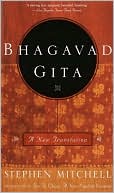Category Books
- Fiction Books & Literature
- Graphic Novels
- Horror
- Mystery & Crime
- Poetry
- Romance Books
- Science Fiction & Fantasy
- Thrillers
- Westerns
- Ages 0-2
- Ages 3-5
- Ages 6-8
- Ages 9-12
- Teens
- Children's Books
- African Americans
- Antiques & Collectibles
- Art, Architecture & Photography
- Bibles & Bible Studies
- Biography
- Business Books
- Christianity
- Computer Books & Technology Books
- Cookbooks, Food & Wine
- Crafts & Hobbies Books
- Education & Teaching
- Engineering
- Entertainment
- Foreign Languages
- Game Books
- Gay & Lesbian
- Health Books, Diet & Fitness Books
- History
- Home & Garden
- Humor Books
- Judaism & Judaica
- Law
- Medical Books
- New Age & Spirituality
- Nonfiction
- Parenting & Family
- Pets
- Philosophy
- Political Books & Current Events Books
- Psychology & Psychotherapy
- Reference
- Religion Books
- Science & Nature
- Self Improvement
- Sex & Relationships
- Social Sciences
- Sports & Adventure
- Study Guides & Test Prep
- Travel
- True Crime
- Weddings
- Women's Studies
The Bhagavad Gita: A New Translation » (Reprint)

Authors: Stephen Mitchell, Stephen Mitchell
ISBN-13: 9780609810347, ISBN-10: 0609810340
Format: Paperback
Publisher: Crown Publishing Group
Date Published: August 2002
Edition: Reprint
Author Biography: Stephen Mitchell
Stephen Mitchell's many books include The Selected Poetry of Rainer Maria Rilke, The Book of Job, Tao Te Ching, Parables and Portraits, The Gospel According to Jesus, Meetings with the Archangel, and The Frog Prince.
Book Synopsis
The author of the popular new English version of "Tao te Ching" brings his gift for bringing new life into ancient sacred texts to one of the world's greatest and most widely read scriptures. This most famous and revered of Hindu scriptures tells the timeless story of the paths of knowledge, devotion, action and meditation. Unabridged.
Publishers Weekly
Arguing that dancehall music is steeped in the Jamaican slave culture of 200 years ago and is not just a recent form of expression by volatile ghetto youth, Norman C. Stolzoff, an anthropologist at the University of California-Irvine, puts forth the first comprehensive study of a largely misunderstood and underestimated phenomenon. In Wake the Town & Tell the People: Dancehall Culture in Jamaica, Stolzoff reveals that the lingo, dress code, power structure (including sexism and violence), sound and expression of dancehall not only reflect the struggle between Jamaica's haves and have-nots but also represent an intra-class (though not insular) battleground among the nation's poor. 44 b&w photos. (Duke Univ., $19.95 320p ISBN 0-8223-2514-4) BHAGAVAD GITA Stephen Mitchell. Harmony, $20 (224p) ISBN 0-609-60550-X ~ The Bhagavad Gita first captured the American imagination in the mid-19th century, when Henry Thoreau and other self-styled "Brahmins" found fresh, contemporary wisdom in India's ancient sacred text. Despite more than 200 English versions since then, few translators have captured the urgency and sagacity of Arjuna's pre-battle dialogue with the god Krishna more expertly than Mitchell, whose translation of the Tao te Ching has sold more than half a million copies and garnered much praise. Mitchell is, refreshingly, as frustrated by the Gita's bewitching circularity as many of its readers have been, and does not shrink from challenging some of the poem's conclusions. Concerning war, for example, he asks, "How indeed can an enlightened sage, who cherishes all beings with equal compassion because he sees all beings within himself and himself within God, inflict harm on anyone, even wicked men who have launched an unjust war?" Mitchell's translation is intimate and personal; he encourages readers to stand in Arjuna's place, asking themselves how they should live. Mitchell emphasizes that the poem is a guide to the path of bhakti yoga (devotion) more than it is merely a philosophical discussion. "The Gita is a love song to reality, a hymn in praise of everything excellent and beautiful and brave," he notes. (Oct.) VISIONS: The Soul's Path to the Sacred Eddie Ensley. Loyola, $17.95 (285p) ISBN 0-8294-1427-4 (Christianity/Spirituality) ~ Ensley, a Roman Catholic contemplative of Native American descent, explores the role of visions in the human experience, specifically the Christian experience. His study of visions in Christian history (e.g., the writings of saints such as Anselm and Thomas Aquinas, and church authorities' interviews with believers who have experienced visions and healings), his own people's traditions, and stories he has heard at retreats have led Ensley to believe that most people have visions. Indeed, he hypothesizes that the human brain is "hard-wired" for transcendence. He attributes modern theology's relative silence on the topic to the Enlightenment, which reduced knowledge to what was rationally comprehensible. Ensley demonstrates that into the 16th century, Christians considered visions an important part of their faith life, while Christians since the rise of rationalism have continued to have visions, but are reluctant to discuss them and lack training in how to interpret them. Ensley gives readers a broad perspective on their own experiences, providing meditations, prayers and writing exercises to equip readers to become receptive and responsive to their visions. Although the book is grounded in the Christian tradition, people of other faiths may also appreciate Ensley's practical integration of transcendent events into everyday life. (Oct.) Copyright 2000 Cahners Business Information.|
Table of Contents
Subjects
 Hinduism
Hinduism  Literature & Sacred Texts - Hinduism
Literature & Sacred Texts - HinduismChristianity
 All Religion
All Religion  Hinduism
HinduismReligion Books
 Hinduism
Hinduism  Literature & Sacred Texts - Hinduism
Literature & Sacred Texts - HinduismReligion Books
 All Religion
All Religion  Hinduism
HinduismChristianity
 Christianity
Christianity  Hinduism
HinduismChristianity
 Christianity
Christianity  All Religion
All ReligionNonfiction
 Religion
Religion  Hinduism
HinduismNonfiction
 Religion
Religion  All Religion
All ReligionReligion Books
 Christianity
Christianity  Hinduism
HinduismReligion Books
 Christianity
Christianity  All Religion
All Religion
